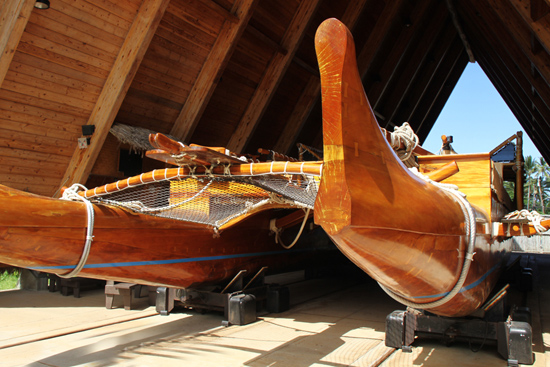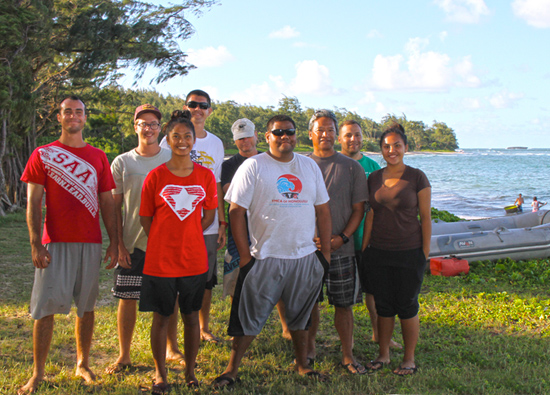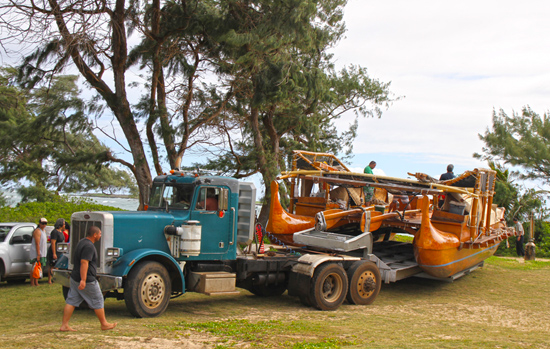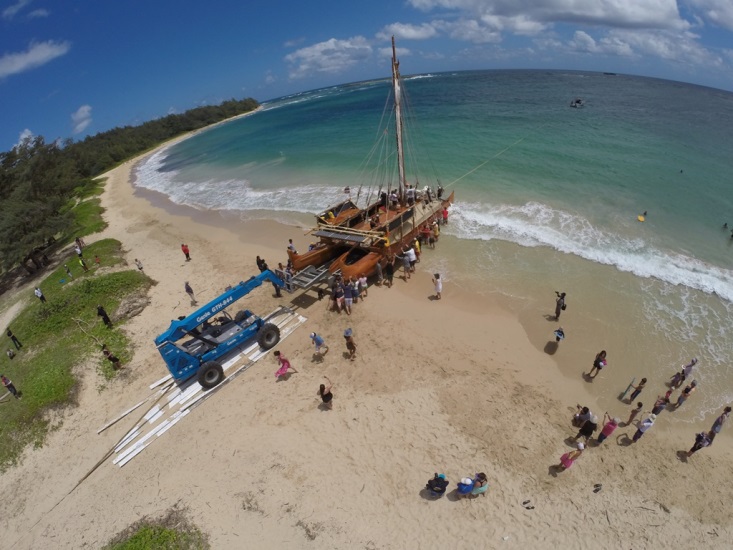The Iosepa — the Brigham Young University–Hawaii/Polynesian Cultural Center’s Hawaiian sailing canoe —left its permanent home berth in the PCC’s Hawaiian Village on August 51, 2014, and is currently moored off Hukilau Beach in Laie, in preparation for its next open-ocean sail.

The Iosepa is a majestic 57-foot single-masted wa’a kaulua or traditionally shaped, single-masted, twin-hulled Hawaiian sailing canoe that was crafted just yards away from its PCC home out of seven large tropical hardwood logs in 2001. Those logs were imported from Fiji, as no comparably sized logs were available in Hawaii. Thousands of people observed the creation of the canoe and participated in its maiden launch in November that year. It has since become an icon and joint venture of both the university’s Hawaiian Studies program and the PCC Hawaiian Village.
PCC “captain” Kawika Eskaran, who was one of the two master carvers behind creating the canoe, said the sail plan tentatively calls for the Iosepa to remain in Oahu offshore water for several days and includes stops at Kualoa — a culturally significant place in ancient Hawaii, Kahana Bay and Haleiwa, weather permitting.
Approximately eight BYUH Hawaiian Studies students will serve as crewmembers under Eskaran, who was formerly Director of Special Projects in the program. He will be assisted by BYUH Hawaiian Studies professor R. Kamoa’e Walk and others. It is also anticipated that several members of the BYUH/PCC Presidents Club will be invited aboard for short sails out of Haleiwa harbor.

Following this, and again weather permitting, Eskaran said the crew plans to sail the Iosepa to and around the island of Kauai before returning to Laie.
Eskaran stressed that safety always comes first, noting that earlier plans to sail were postponed due to tropical storm warnings. “We’re watching all the different happenings — wind speed, wave heights, etc. — to make sure the students can handle all of these things,” he said, also pointing out that several of the student crewmembers have previously sailed.
“We’re very grateful to both PCC and BYU–Hawaii for assisting with the canoe,” Eskaran continued. “For example, the students on the crew who work at PCC have their jobs guaranteed when they return.”

Kaipo Manoa, “chief” of the PCC’s Hawaiian Village said he and some of the other village staff would also love to sail, and that kūpuna or community elders and other leaders who participated in the short sails from Kahana Bay and Haleiwa in years past still talk about their experiences.
He explained that since the Iosepa found a permanent berth in the PCC Hawaiian Village, literally millions of people have learned more of its significance. “We know the significance of having this cultural icon here,” Manoa said. “It adds to our credibility, and we look forward to more opportunities to share it with the world in different ways, and have more people appreciate what we’re trying to accomplish.”
Manoa also praised the dedication of the BYUH Hawaiian Studies faculty and students, who have been training for the upcoming sail for months. “The crew hours are crazy,” he said. “They sometimes begin at 5 in the morning, and sometimes stay until 11 or 12 o’clock at night.”

Wideview photo by Jack Baxter
The Iosepa will once again go on display in the Hawaii Village when it returns from its latest voyage.
— Story and photos by Mike Foley

Recent Comments